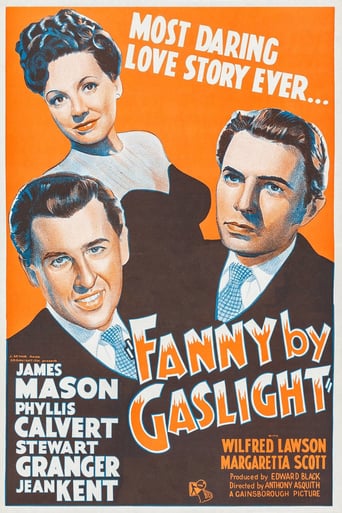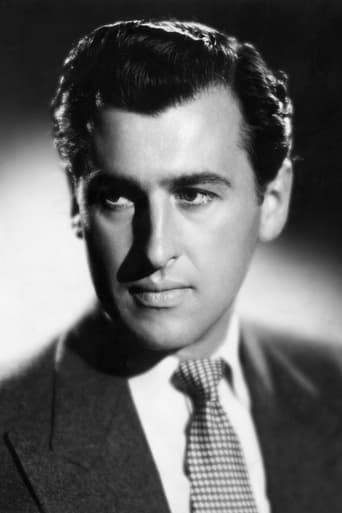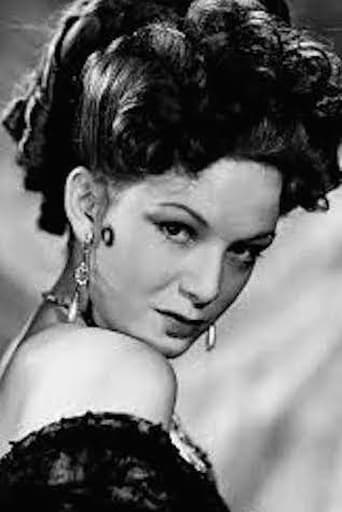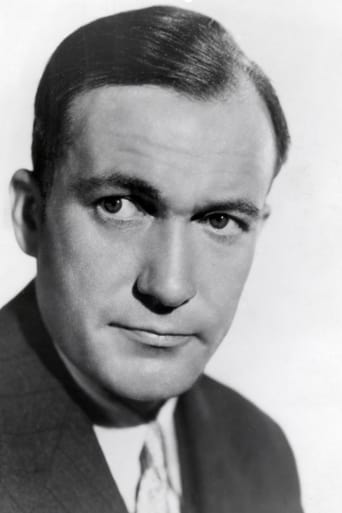bkoganbing
Fanny By Gaslight was one of Gainsborough Pictures romances starring its greatest stars, Phyllis Calvert, Stewart Granger, and James Mason all in their salad days. It's a Victorian soap opera with a lot of Dickens like class consciousness thrown into the mix.The best works of Charles Dickens like David Copperfield, Nicholas Nickleby, and Great Expectations have the common thread of a young man of limited means making his way in the world who with a combination of hard work and good circumstances comes out on top at the end of the story. Fanny By Gaslight is just that kind of a story, except that Dickens would never have his protagonist be a woman. But Fanny Hooper as played by Phyllis Calvert is as good a Dickens hero as you will ever find.When Calvert returns from boarding school her father, John Laurie, is killed in a fight ejecting a drunken James Mason from his establishment which is just this side of a brothel. When he dies she finds out that Laurie was not her real father, that she is the daughter of a prominent politician Stuart Lindsell. She's taken into his house as a maid. Calvert also makes the acquaintance of rising young politician Stewart Granger who is a protégé of Lindsell and Granger falls big time for Calvert.Eventually all this becomes known about Calvert's background and it leads to an inevitable climax between Mason and Granger. How it gets to that point is the crux of the film.Several incidents from the 19th century are used. The sex scandals are pieced from those involving Charles Dilke and Charles Parnell. Lindsell's suicide, jumping in front of a train is a recreation of the death of William Huskisson killed accidentally though by George Stephenson's newly invented locomotive.Calvert and Granger are a winning pair of lovers and James Mason is one hateful aristocratic villain, a privileged man who lives to enjoy his privileges at the expense of others as Phillip Barry said. I was surprised at how well Fanny By Gaslight holds up today. In fact the Hays Office had it banned from the USA for a while. Maybe that's its secret.
Jem Odewahn
The second Gainsborough costume melodrama (rushed into production after the huge, unexpected success of Regency romance THE MAN IN GREY)is a more sober work than it's predecessor. Set in the constricting Victorian class system, FANNY seems to be striving for greater realism than THE MAN IN GREY, in part due to the critical whipping of the former film as "trash". Three of of GREY's main line-up return: Phyllis Calvert (playing put-upon heroine Fanny), Stewart Granger (Harry) and the one, the only James Mason (Lord Manderstoke). As with GREY and MADONNA OF THE SEVEN MOONS, the film engages in doubling of it's characters to make it's point. FANNY depicts a Victorian England that is polite and pretty on the outside, yet teeming with moral decay on it's underbelly. From the opening shot where a young Fanny rolls a ball into her father's The Shades (a den of inequity), good/bad, poor/wealthy, innocence/depravity is juxtaposed. Fanny herself is not immune to this, as, after her father (John Laurie) is killed by Lord Manderstoke (who gets off easily at the fixed trial), she discover he's not really her father at all, and she is actually the illegitimate product of a love affair between her mother and a man who is now a high-ranking politician. Her biological father secretly arranges for Fanny to live with him, and in time reveals himself. However, personal and public lives collide as his horrible wife (who is having an affair with Manderstoke)threatens to expose him if her doesn't give her a divorce. He commits suicide, and Fanny is left with no-one to turn to but the dashing Harry...and Lord Manderstoke still lurks ominously in the background... Calvert again catches the audience's sympathy as Fanny- she, like Olivia de Havilland, could make these heroines believable. Granger seems to be lacking most of the screen presence and charisma he brought to THE MAN IN THE GREY (where he and Calvert made a lovely couple), perhaps it is his stuffy role as the obligatory romantic hero. Mason dominates every scene he appears- sexy, sadistic, sardonic, cruel yet possibly sympathetic as Manderstoke. His sadistic charm is best illustrated in a great scene with the adulterous wife- Wife: Really, don't you care for me AT ALL? Mason: (Looking up at her, while twirling a flower in his fingers)No. (This is said in his inimitable voice). He is completely dastardly, yet at the same time, irresistibly attractive. Jean Kent gets one of her early key roles as Lucy, Fanny's childhood friend who offers herself to Manderstoke. The doubling is reminiscent of THE MAN IN GREY (Lockwood and Calvert), yet Lucy is much less callous than Hesther. Instead, she's a victim of Victorian society and her own weaknesses.
alice liddell
Poorly paced, but highly entertaining, and quite thought-provoking melodrama. It is typical Gainsborough fare: shrouded Victorian settings; innocent, swooning heroines, who have the most godawful horrors thrown at them in an unenviably short stretch of time; 'dashing' (i.e. stilted) heroes; arousingly sadistic villains played by James Mason; the intrusion of music hall cheek into an already vulgarised 'gentility'; good-hearted Cockney servants, here called Chunks; a brazenly frank, unheard of in contemporary Hollywood, treatment of sexuality.In many ways, FANNY comes straight out of Victorian melodrama. The hypocrisy of Victorian England as essayed in Dickens and Conan Doyle is rife here: the delicate pattern of respectability is shown to be infinitely fragile. This is why the accumulation of Fanny's traumas is so plausible - one toppling domino of the edifice of respectability leads to a complete and far-reaching collapse.The result is a failure of patriarchy, an oppression split against itself. Look at the frightening scene where Fanny's 'real' father is shown in splintered mirror reflection - the pressure turns him, Jekyll-and-Hyde-like, from a feckless, passive fraud, into a figure from a horror film, as he foresees his own death, the only option to his self-created web of deceit (wow, you really do get into it!). Fanny's first family home stands over her supposed father's burlesque house, home to many of the Victorian great and good. The fact that she has two fathers emphasises this pervasive dichotomy.Women, in this double world, have only two options open to them, and they have a rotten deal in both. If they try to live with integrity and decency, like Fanny, they are buffeted, nay fairly walloped by a most malevolent Fate (or the workings of a corrupt social machination, whatever you want to call it). Fanny's swoonings are less conventional Victoriana than blows dealt by forces beyond her.If, on the other hand, women transgress, like Lucy, or her father's wife (both, appropriately, if cheerfully xenophobically, linked to Frenchness), they are equally vulnerable to caprice, as their lovers turn against them, or abandon them. The film is also very good on how the idea of 'woman' is constructed in patriarchal society - there are many elaborate scenes of dressing and undressing, distortions of 'natural' femininity. Class construction is analysed too, also limiting and defeating men.
The title of the film might seem oblique, or merely atmospheric, until we note all the gaslamps standing suggestively between characters; part of a wider phallic plot, seen most interestingly, less obviously, between Stewart Granger and James Mason. Mason is perversely the most sympathetic character in the film. I say perversely, because, for the first hour and a half, he is a real monster, a glorious, diabolical, handsome, unredeemably vicious, incredibly sexy monster, who clearly has the filthiest, and most elaborate, Sadean sex ever. He is the ultimate transgressor, taboo in both the Underworld and respectable society, the two being complicit in the same corrupting system. He is only on screen in annoyingly , if appropriately brief, spurts - the first fifteen minutes of the film is electrifying entertainment. He is an aristocrat, locus of all the fears, yet desires (and 1940s British women worshipped him) of the British middle classes.But when he goes to France - as all four protagonists do: it is a site of freedom from the ubiquitous repression of Britain, but also the ultimate venue of closure where everything is fatally brought to a head - he becomes a much more understandable, tragic figure. We see he has been demonised by respectable society as a demonic Id that must be cast out. His reduction from malevolent swaggerer to simian depressive is a shock to behold. His forcing of the duel is less a matter of honour than a poignant wishing for death. Mason is outstanding, turning a potential caricature into a figure of far greater depth. He is the Fassbinder hero of this melodrama, the tormented transgressor; not the two protagonists, whose desire for conventionality will only replicate the system that tortured them in the first place.What is finally remarkable about the film is how these issues managed to get aired at the height of World War II. Gainsborough films were by far the most popular among British audiences at a time when duty, austerity, self-denial was mandatory. These films, and especially FANNY, by contrast, became the focus of all those repressed desires - a dissatiafaciton with authority and patriarchy; the thrill of (particularly female) transgression; the impulse to excess; a rejection of duty and tradition; all the things in real life audience members were supposed to be defending. Is it any surprise Labour got in the following year? That is why the films, beyond their stereotypical melodrama, remain enduringly fascinating. Just more James Mason, please...mmm.





